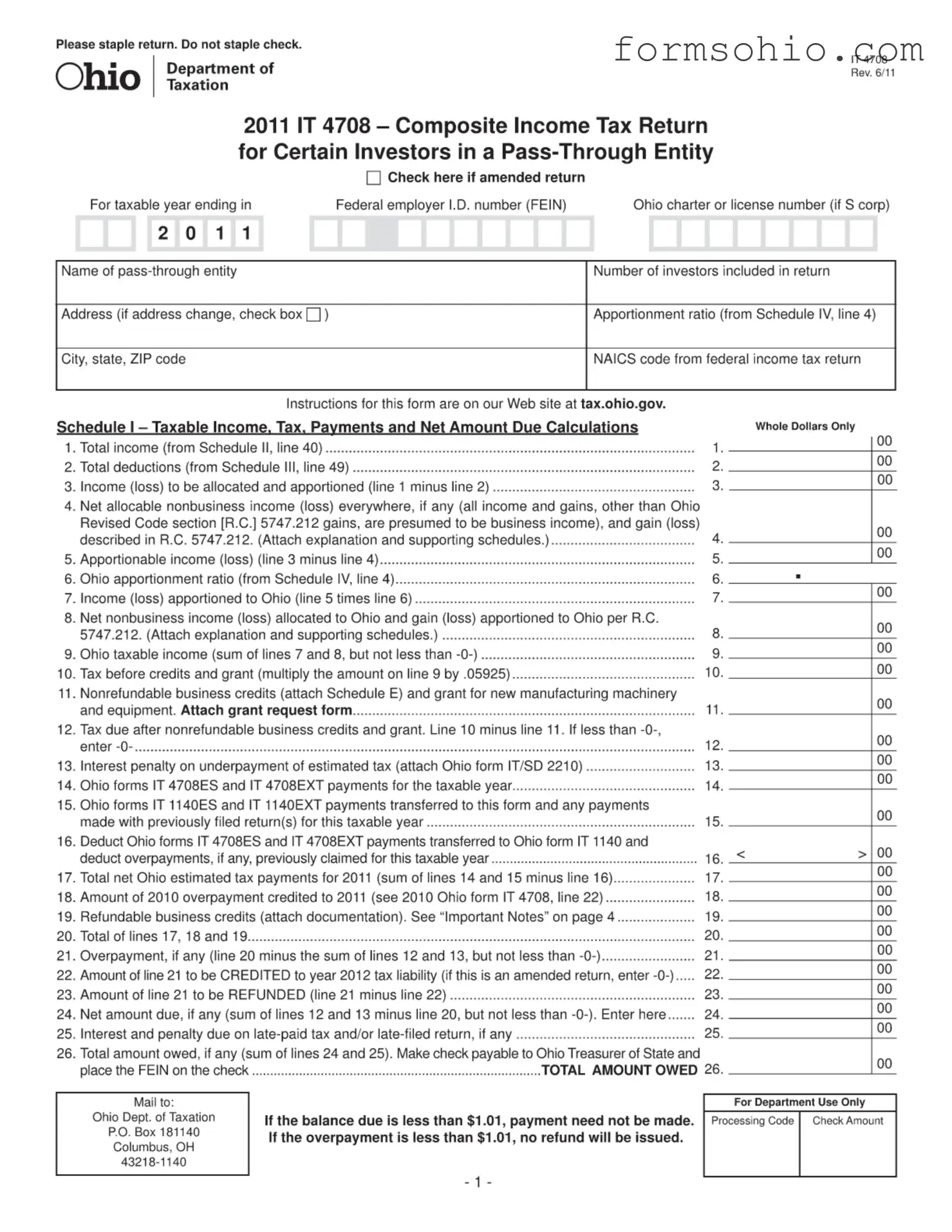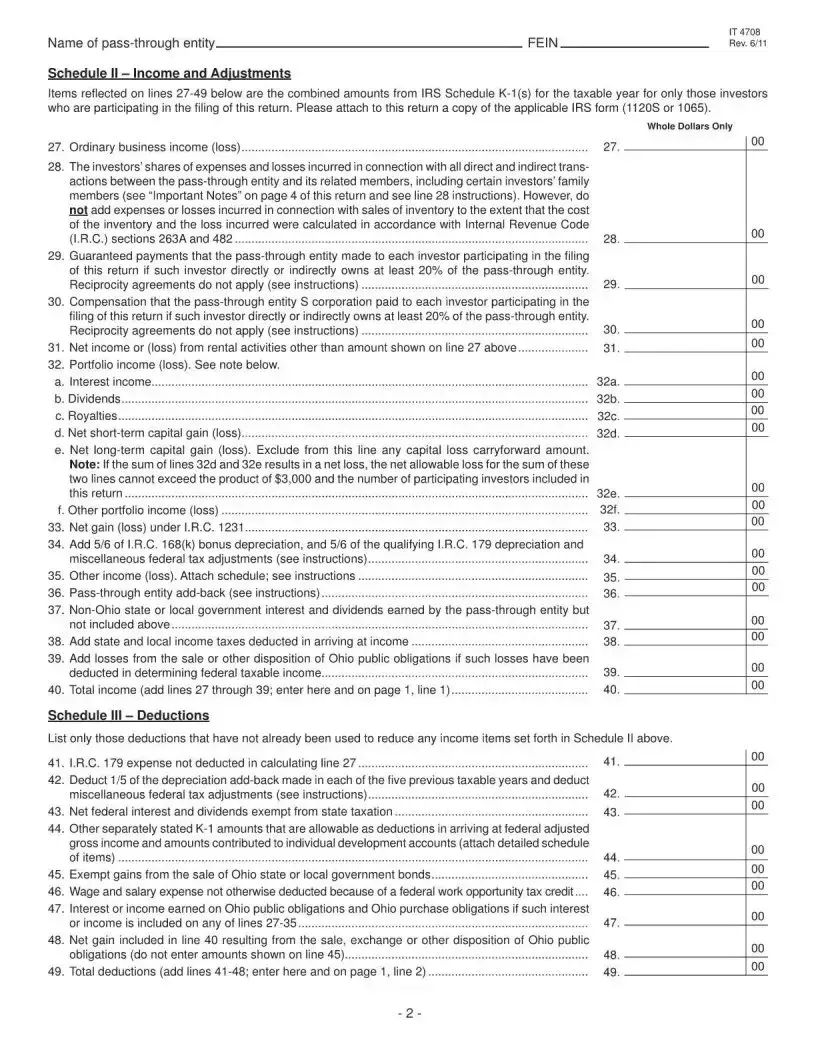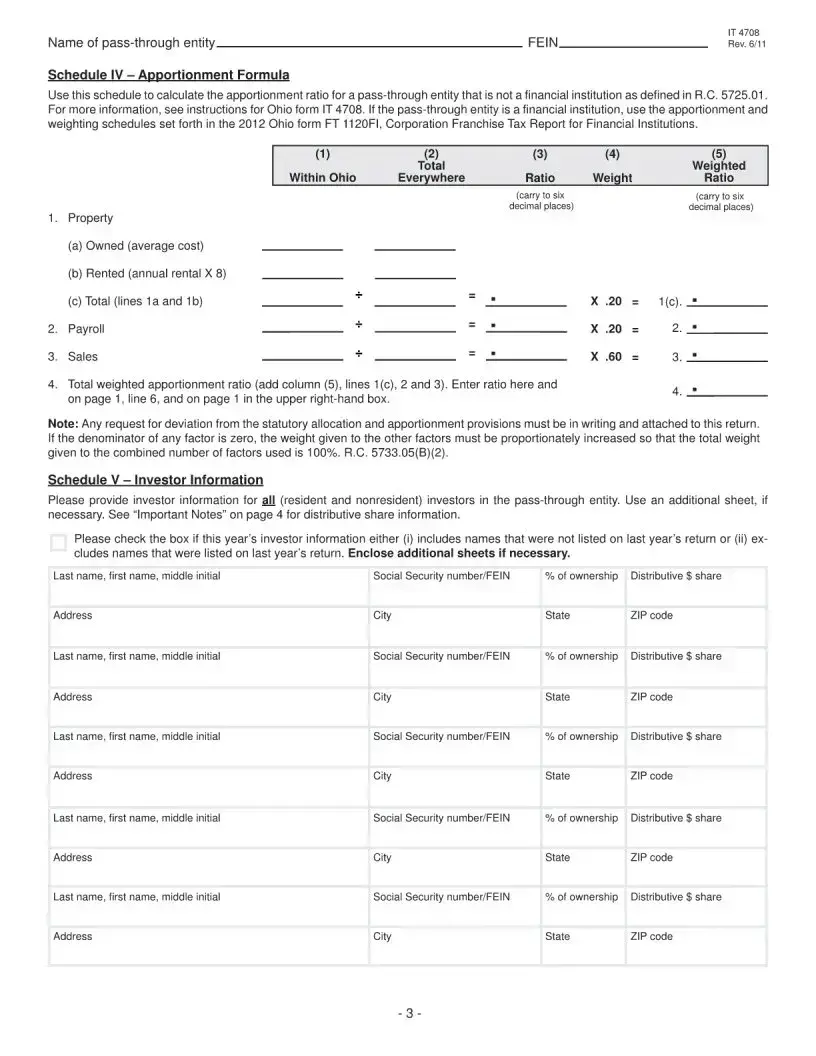Filling out the Ohio IT 4708 form can be a straightforward process, but several common mistakes can lead to complications. One frequent error is failing to include all necessary information about the pass-through entity. This includes the name, address, and federal employer identification number (FEIN). Omitting these details can result in delays or rejections of the tax return.
Another mistake often made is not accurately calculating the income and deductions. Taxpayers should ensure that the total income from Schedule II and total deductions from Schedule III are correctly entered. Miscalculating these figures can lead to incorrect tax liability, potentially resulting in penalties or interest charges.
People also commonly forget to attach required documentation, such as copies of IRS forms 1120S or 1065. These forms provide essential information about the investors and their shares in the pass-through entity. Without this documentation, the return may be deemed incomplete, prompting the Ohio Department of Taxation to request additional information.
Additionally, some individuals overlook the importance of checking the box for an amended return when applicable. If changes have been made to a previously filed return, this box must be checked to ensure that the corrections are processed correctly. Failing to do so may lead to confusion and complications in the tax filing process.
Lastly, many filers neglect to review the entire form for accuracy before submission. Simple mistakes, such as arithmetic errors or incorrect entries, can have significant consequences. Taking the time to double-check all calculations and information can help avoid unnecessary issues and ensure a smoother filing experience.




